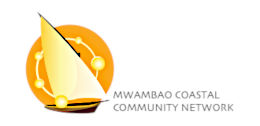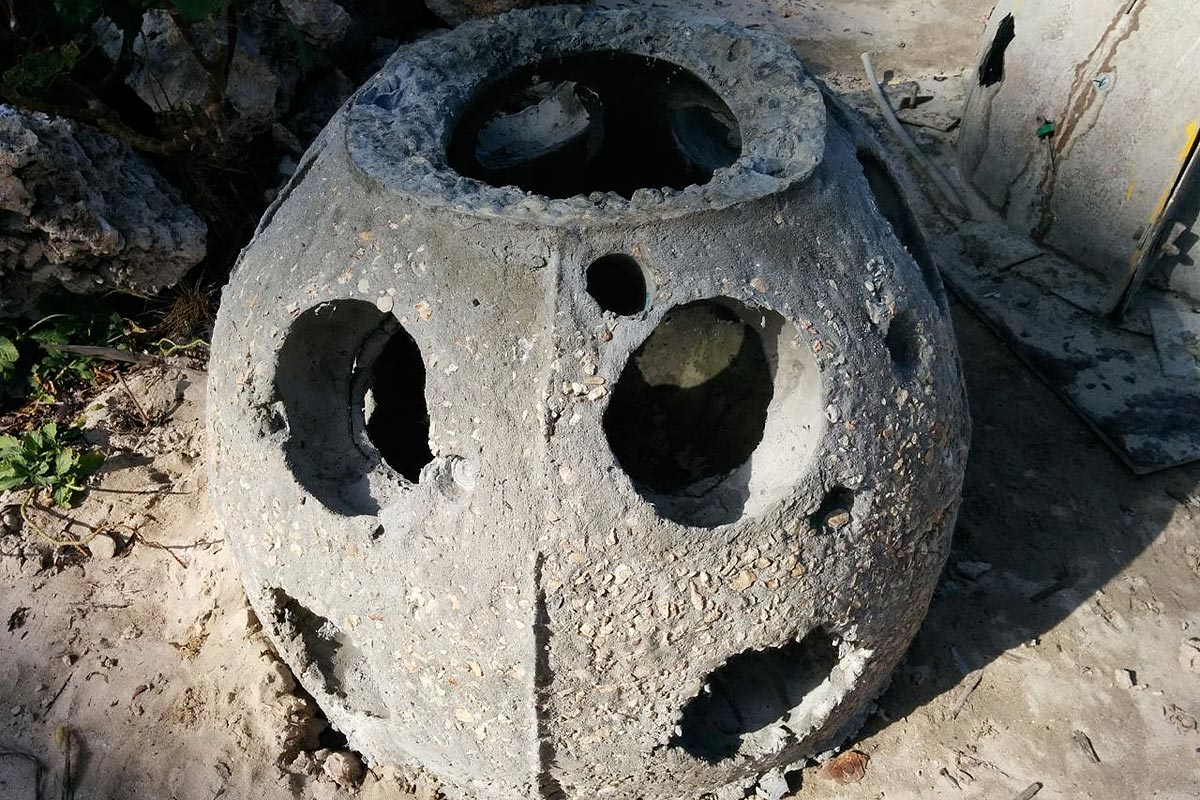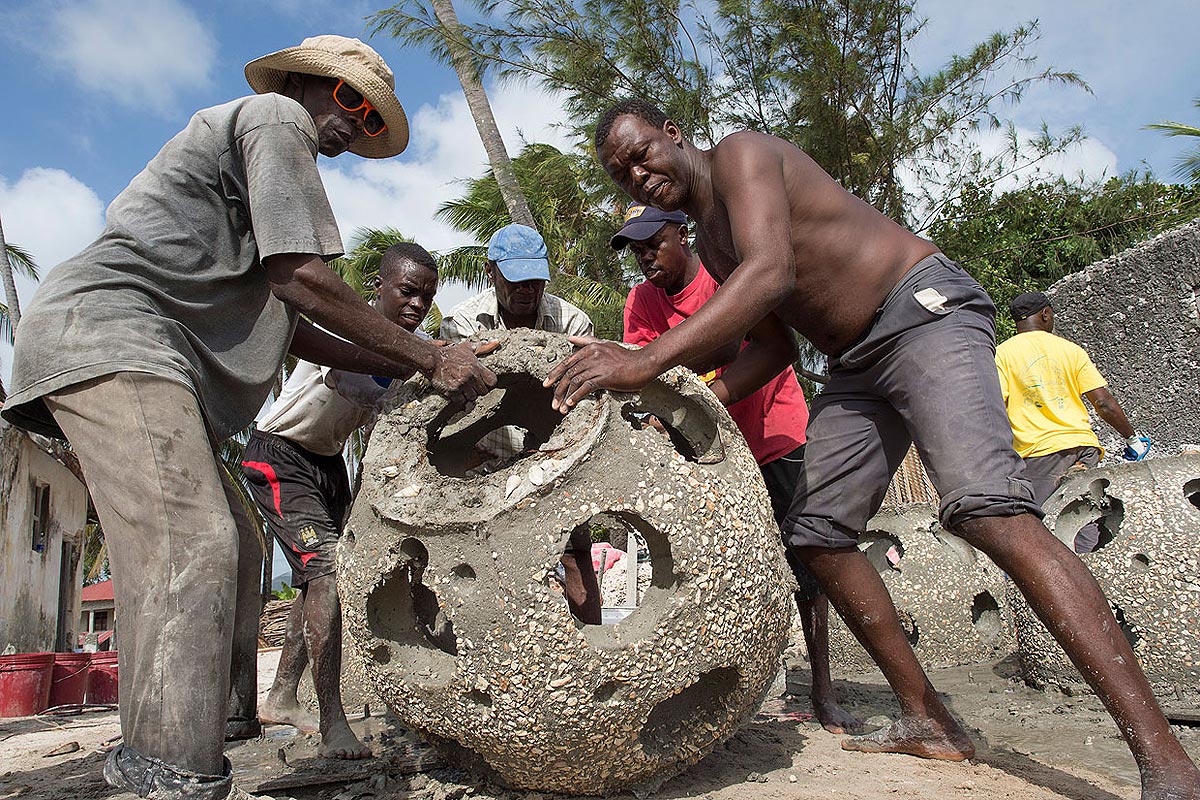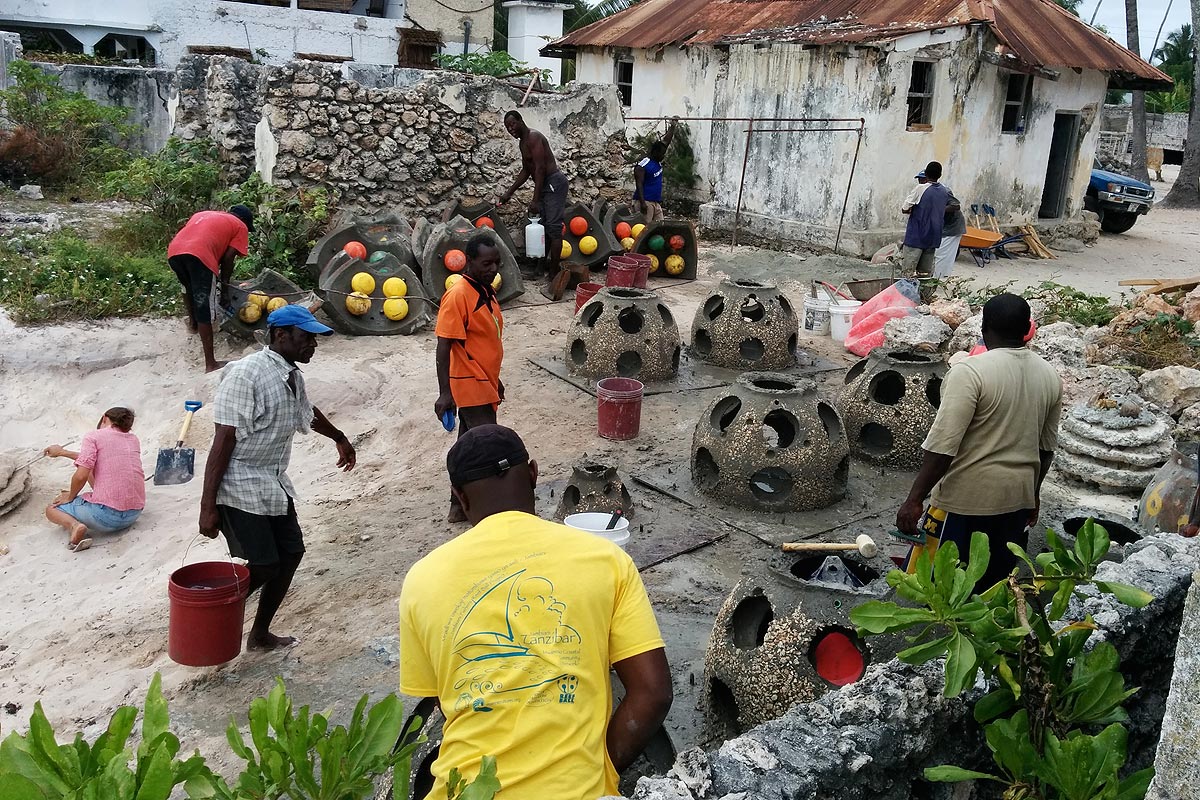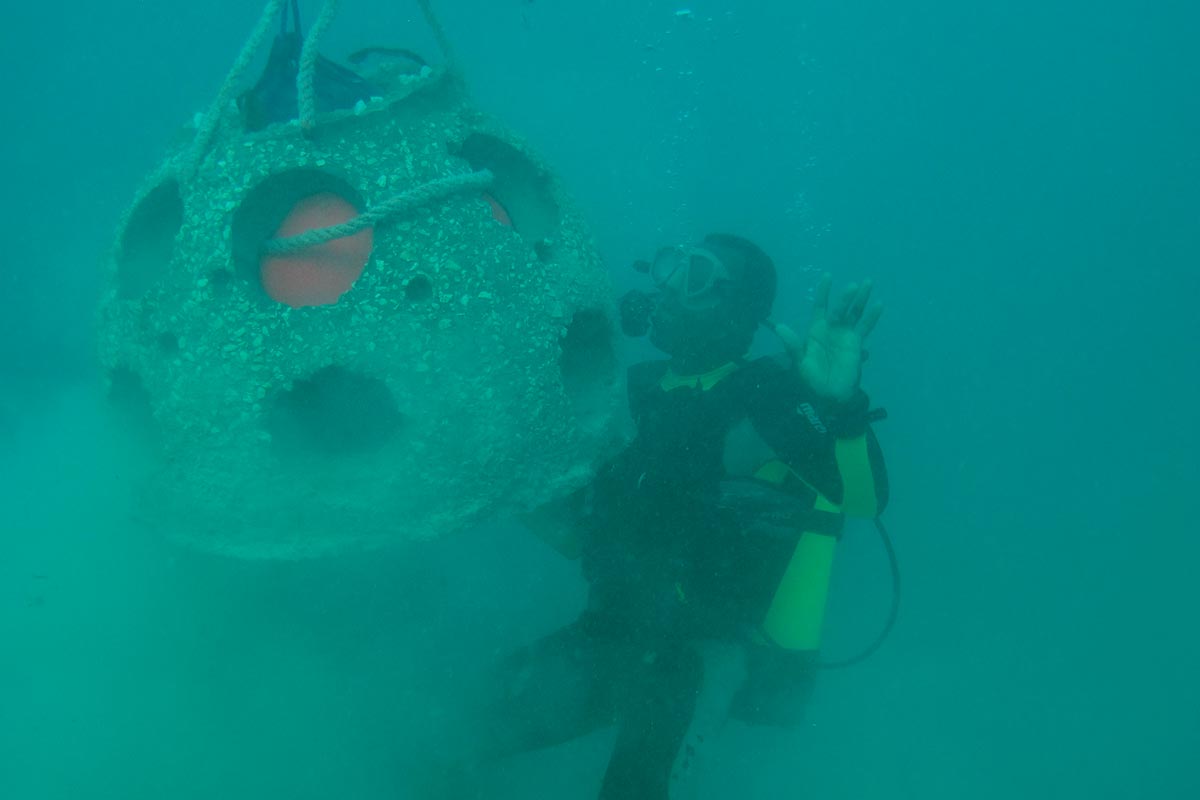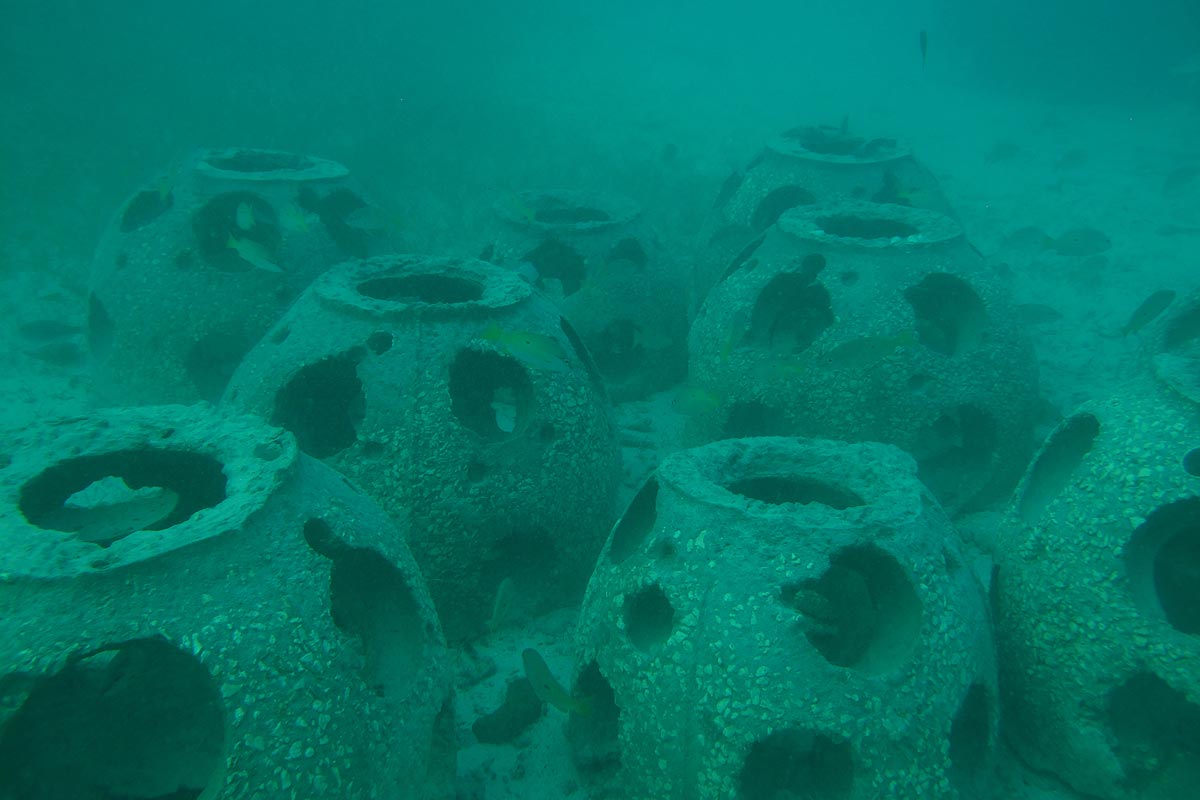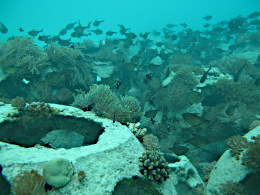Reef Balls / Artificial Reef
Background
Earlier in 2014, the Zanzibar NGO Mwambao Coastal Community Network requested our collaboration on a community-based reef ball project. Thanks to our location in Jambiani, our team, and our coral farming project we became project partners with Mwambao and will become a pilot site for using this approach in Tanzania.
Reef balls are hollow concrete balls with holes that approximate the texture of reefs. They are used to revitalize dead reefs or to revive a sandy, lifeless seabed with an artificial coral reef. More than 500,000 reef balls have been put in place so far in 55 countries around the world. (See www.reefball.org)
As early as a week after the reef balls are sunk algae start to grow. Shortly thereafter, small animals such as sea snails, worms, and larvae can be observed. In the artificial cavities crabs and crawfish seek shelter. Fish use them as hatcheries, and corals grow on the surface. When previously cultured corals are planted on the reef balls at the outset, they grow and spread even faster.
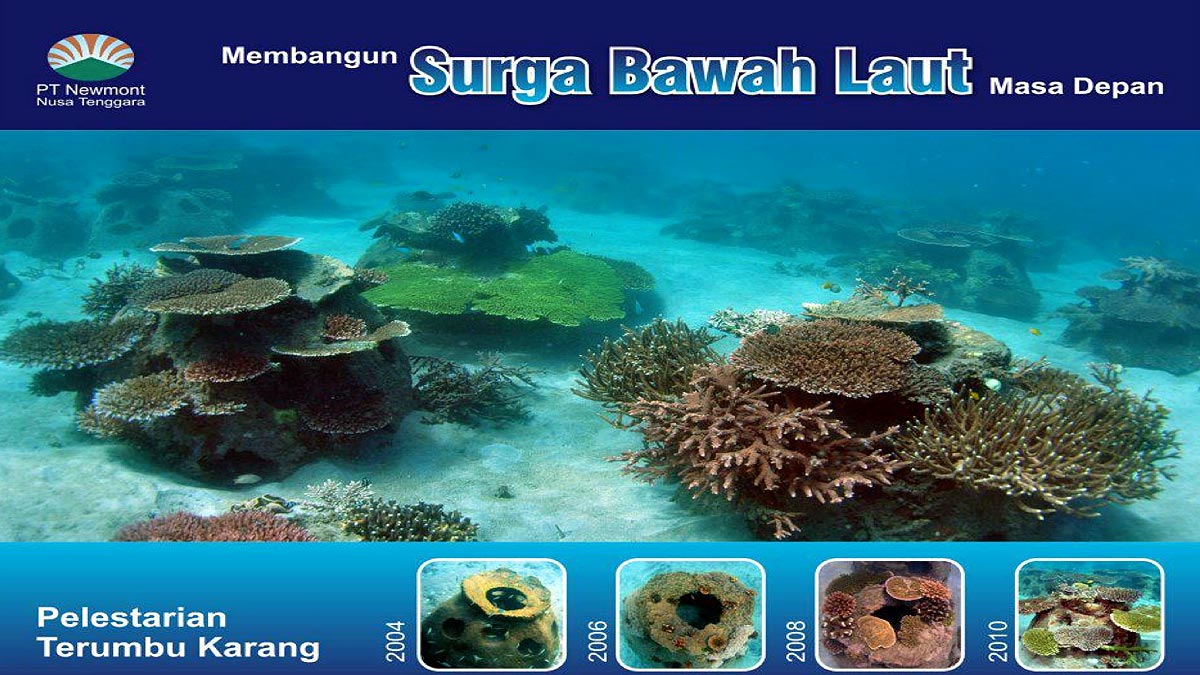
Goals
Our goal is to sensitize fishermen and the local communities to the problems of damaged reefs and disappearing corals and fish stock. Through our project, Jambiani’s population learns more about the important function of the reefs in the ocean and its food chains. They also learn how to put in place and cultivate artificial reefs. Our plan is that at some point in the future, students and tourists may visit the artificial reef for educational purposes.
We also aim to pilot techniques used elsewhere in the world to restore damaged reefs in Tanzania. In mainland Tanzania in particular, dynamite fishing is still common, with deleterious consequences for the reefs, biodiversity and fish stock. While newly created reefs will never replace existing reefs which have developed over hundreds of years, in some situations it may be necessary to create new areas of reef both for biodiversity purposes but also for coastal protection. Together with partners, we would like to be in a position to be able to provide the needed technology and local know-how. In that sense, the Jambiani reef ball reef is also becoming a research site. Our coral and sponge farms may be able to deliver sustainably propagated coral to other sites.
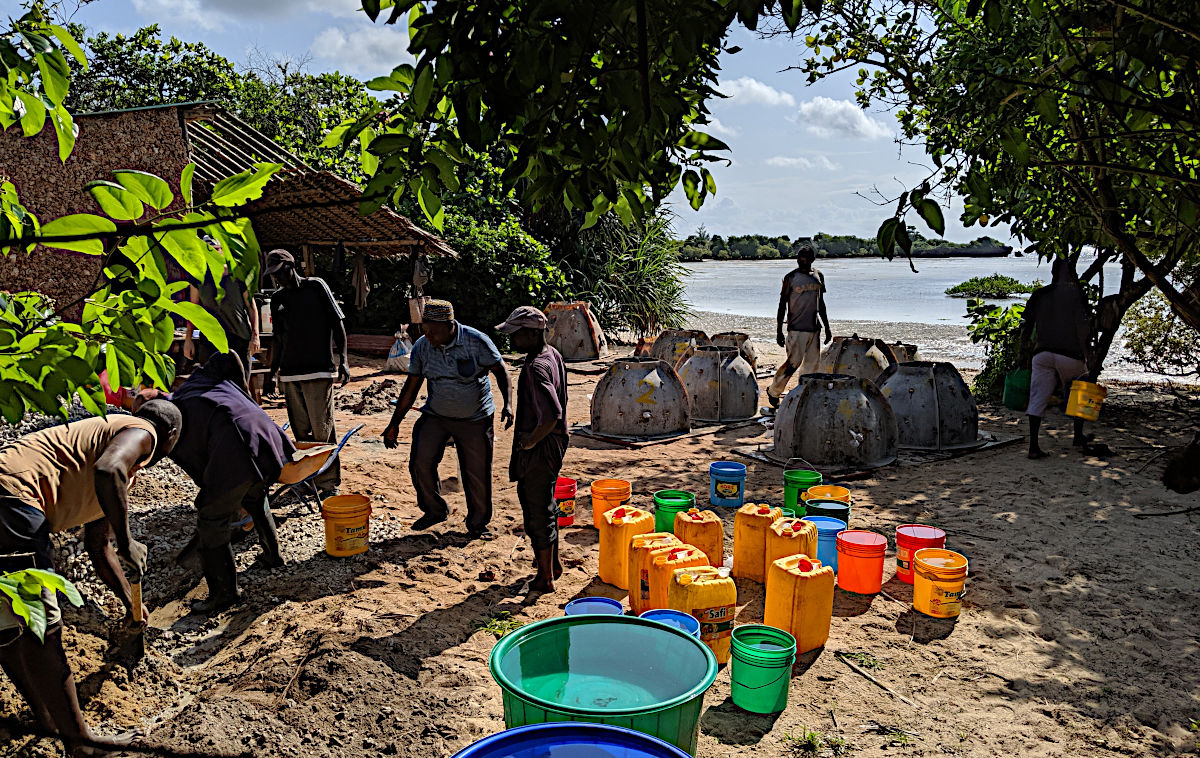
| Start: |
January 2014 |
| Duration: | 2014-2024 |
|
Goal: |
- Recovery of coral and fish stock; raising awareness among fishermen. - Development of know-how for the reforestation of damaged coral reefs. |
| Partner: | Mwambao Coastal Community Network |
| Status: | 2017 Corals re-transplanted of Reef Balls after El Niño, 2019 training of trainers in Boma (near Tanga, mainland Tanzania), 2020 Training of fishers of the community Kukuu in Pemba |

